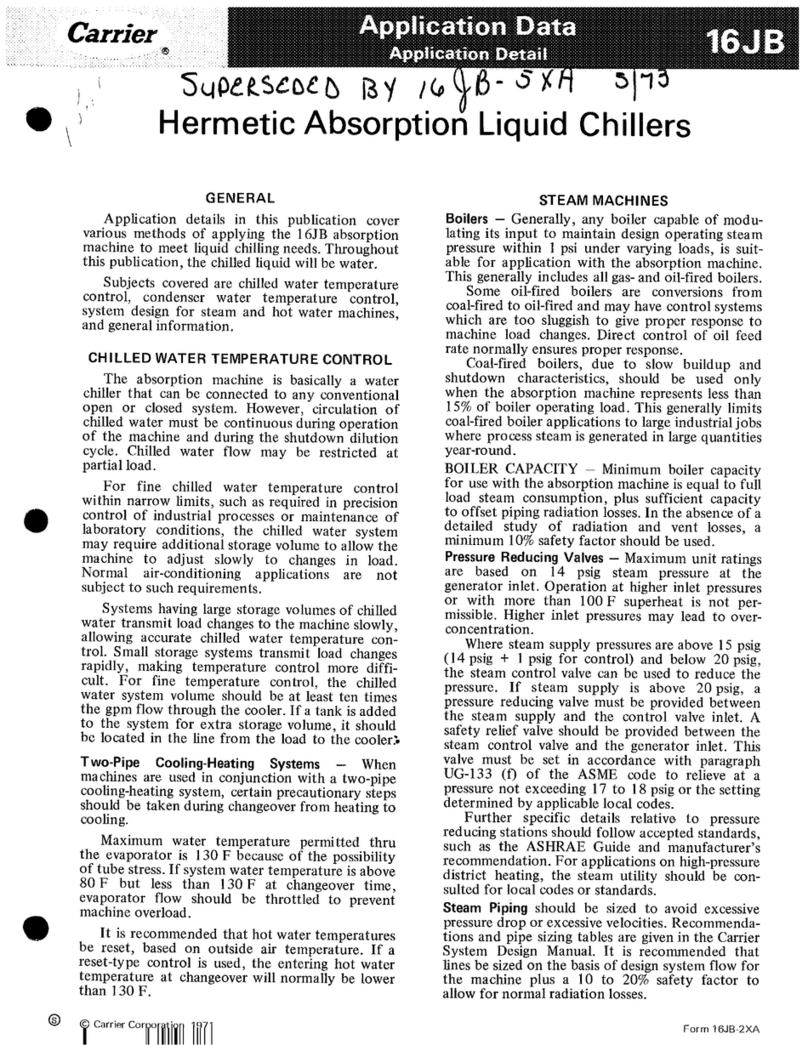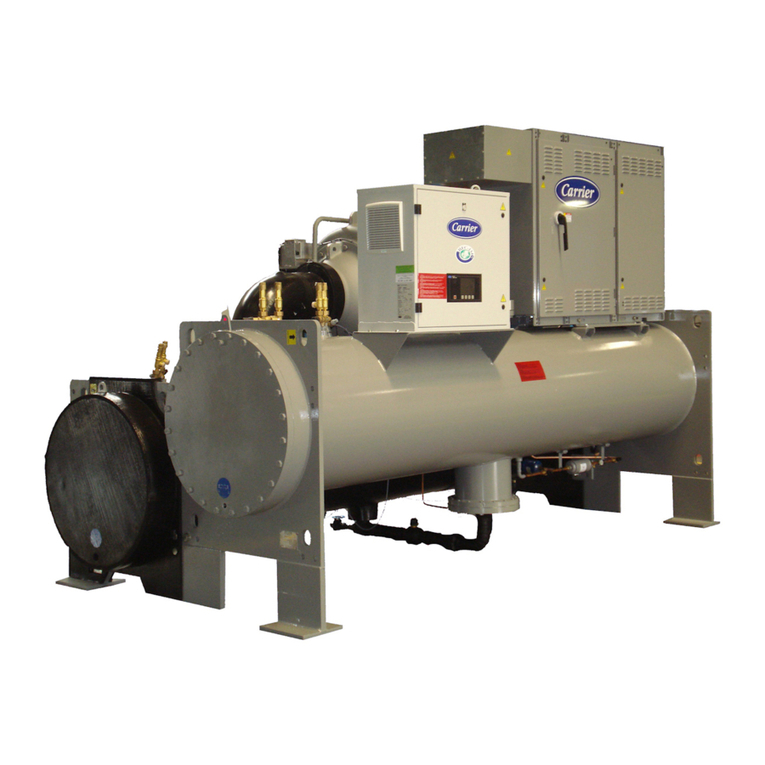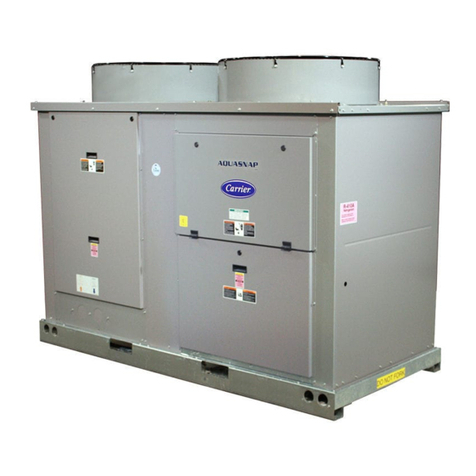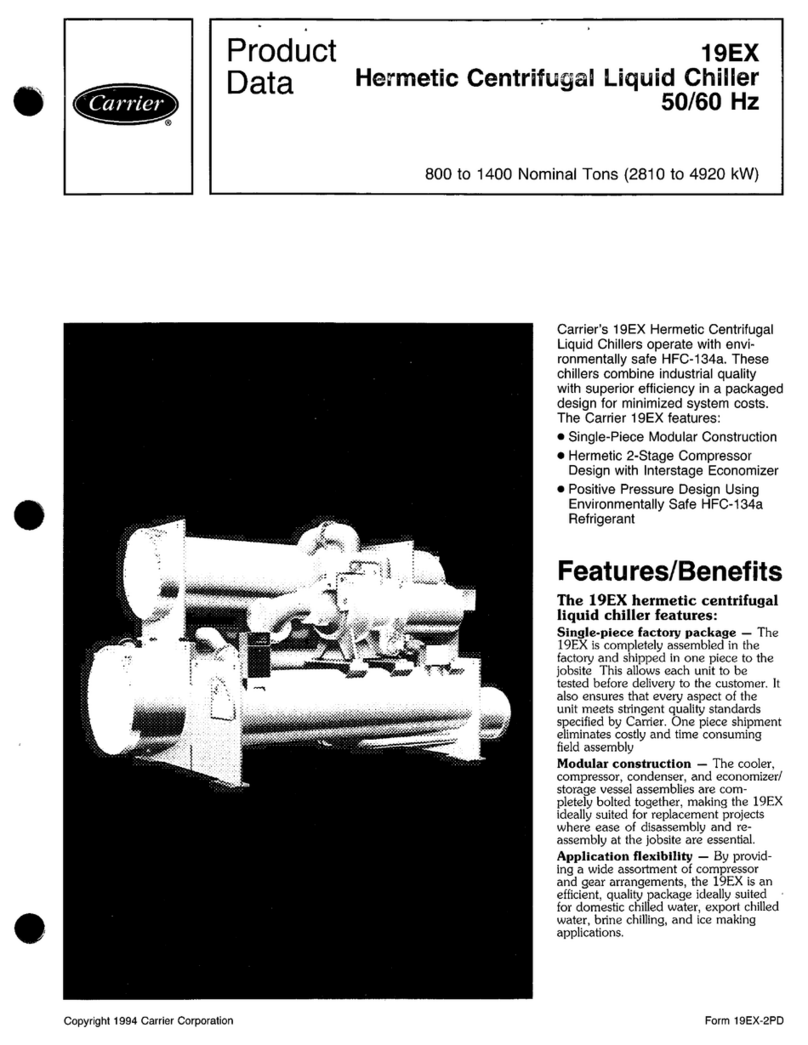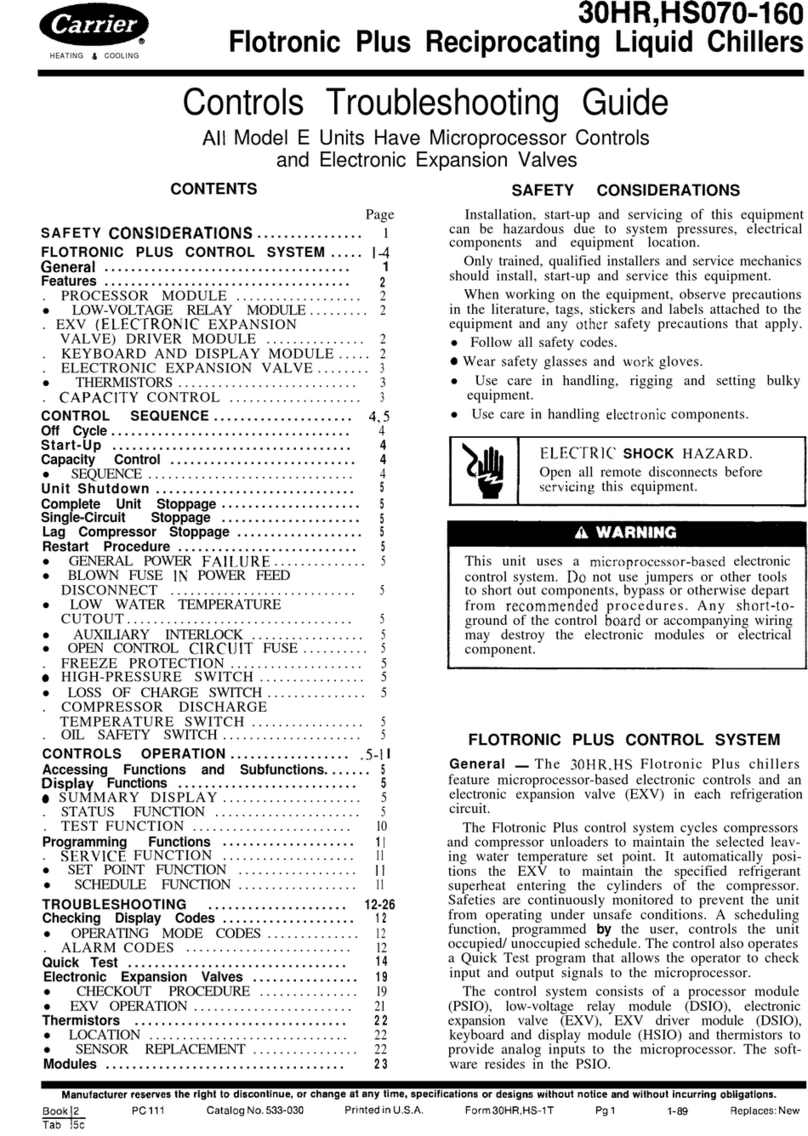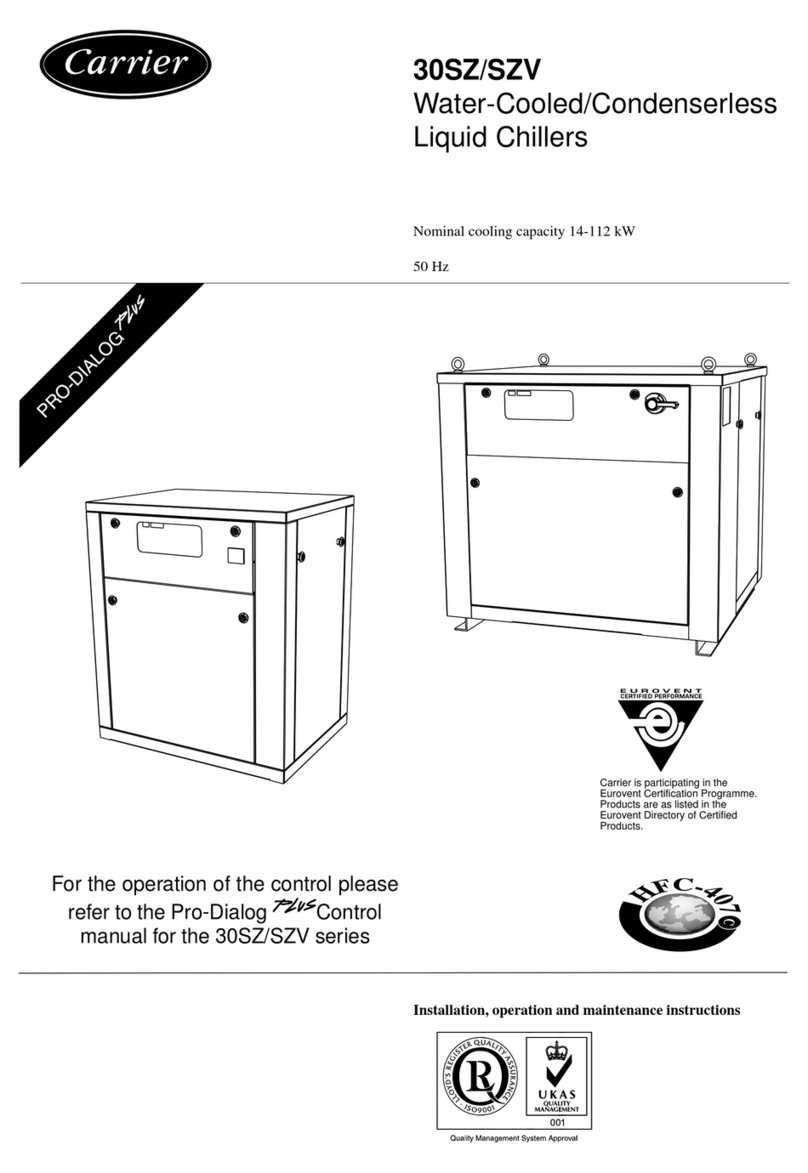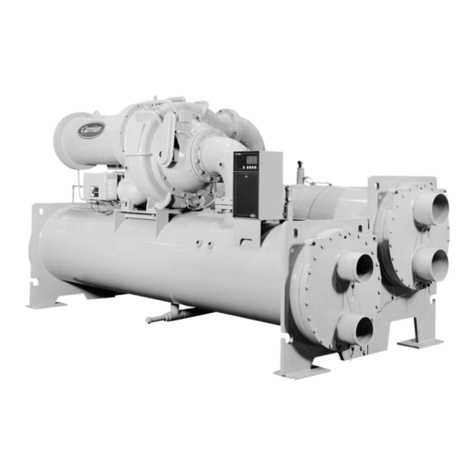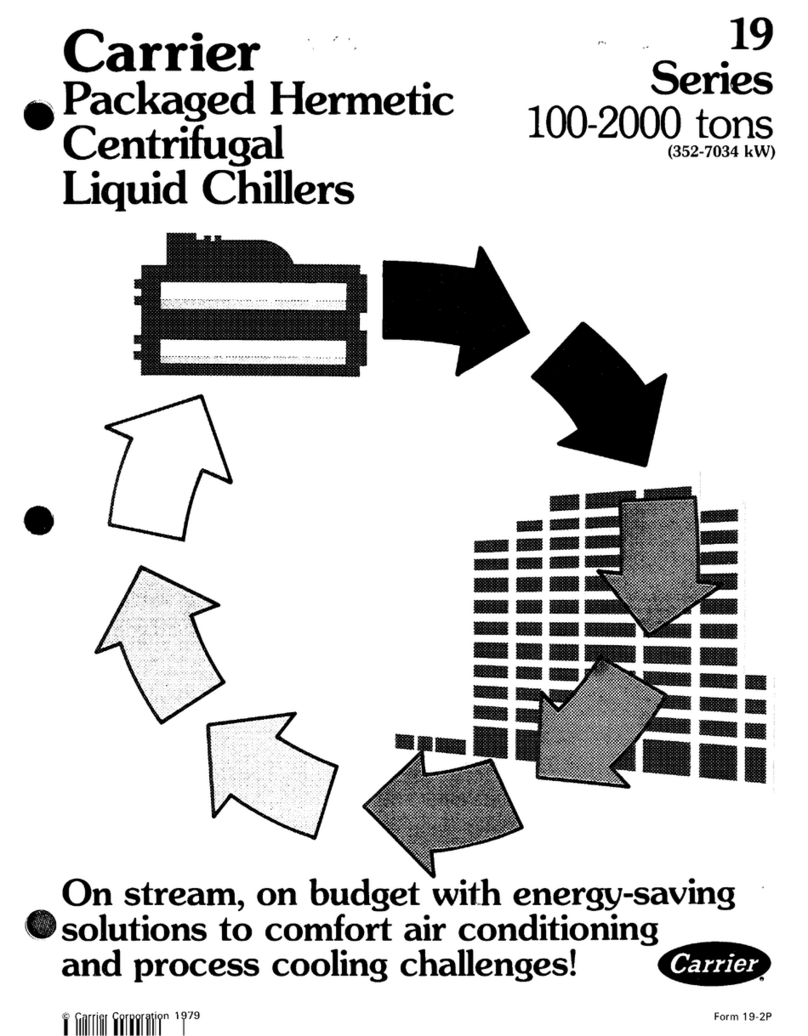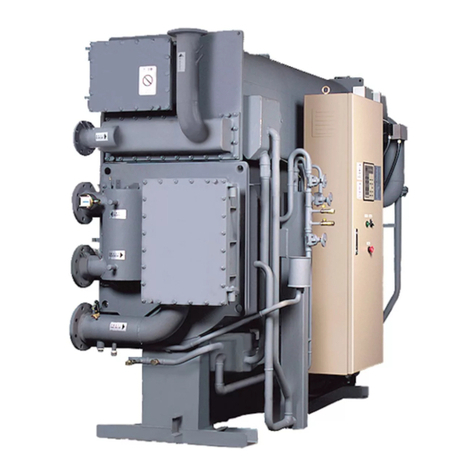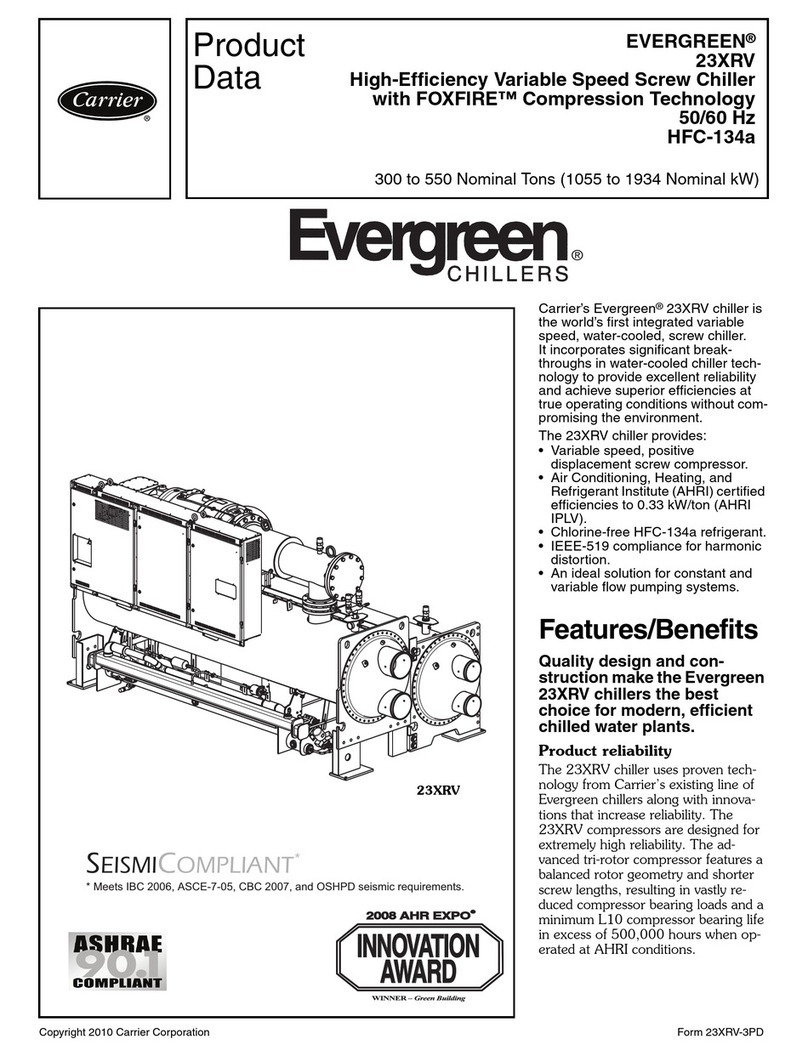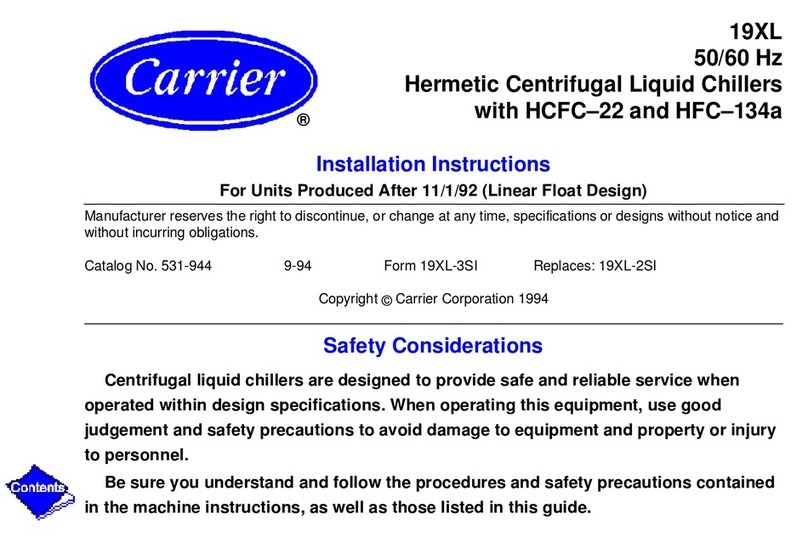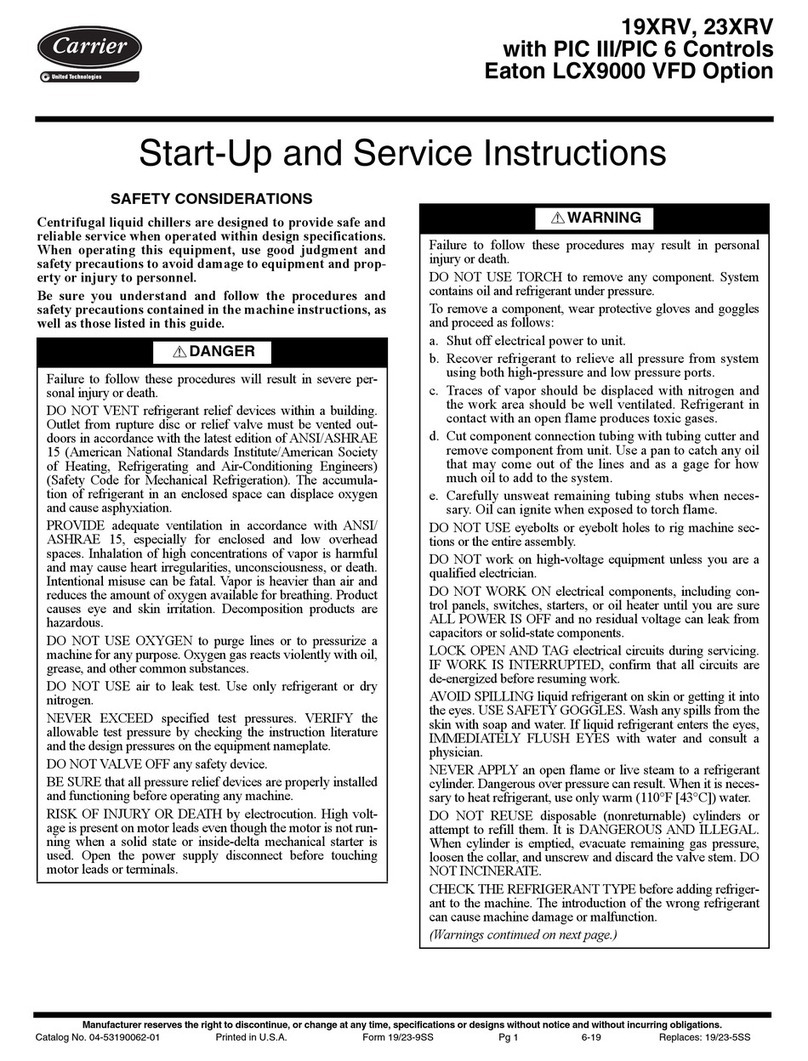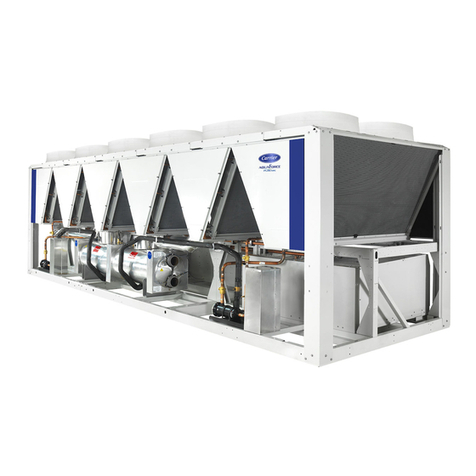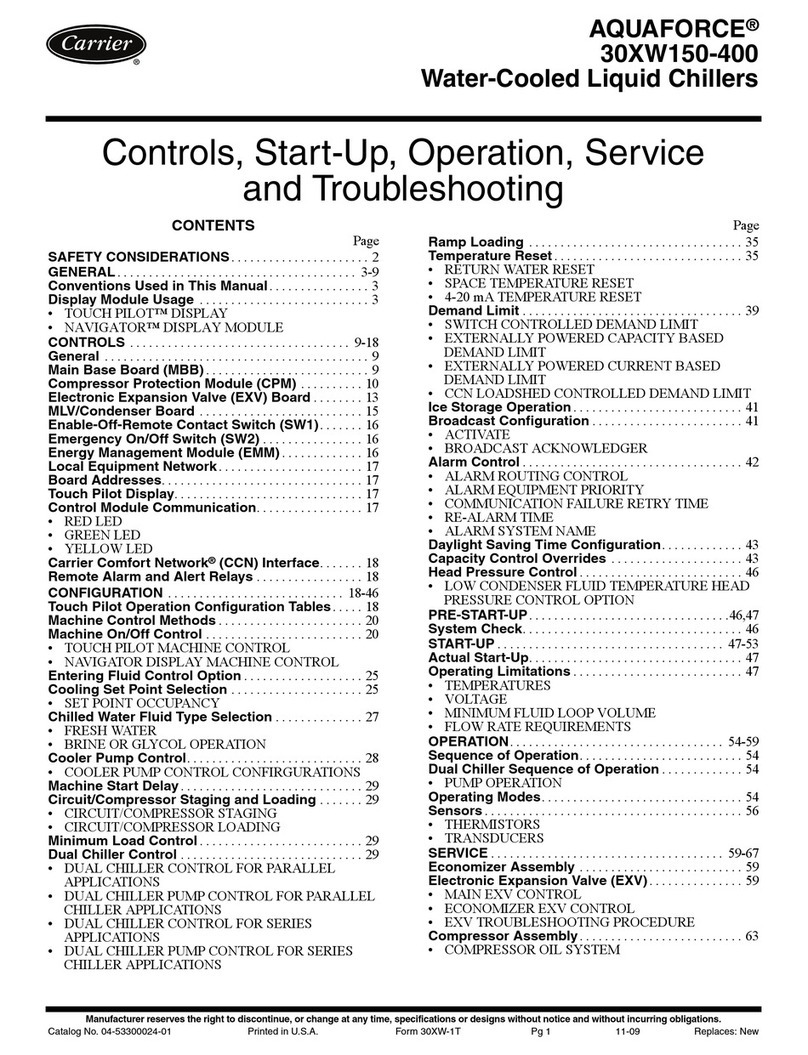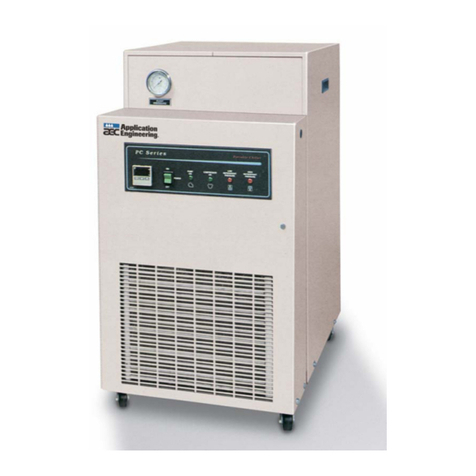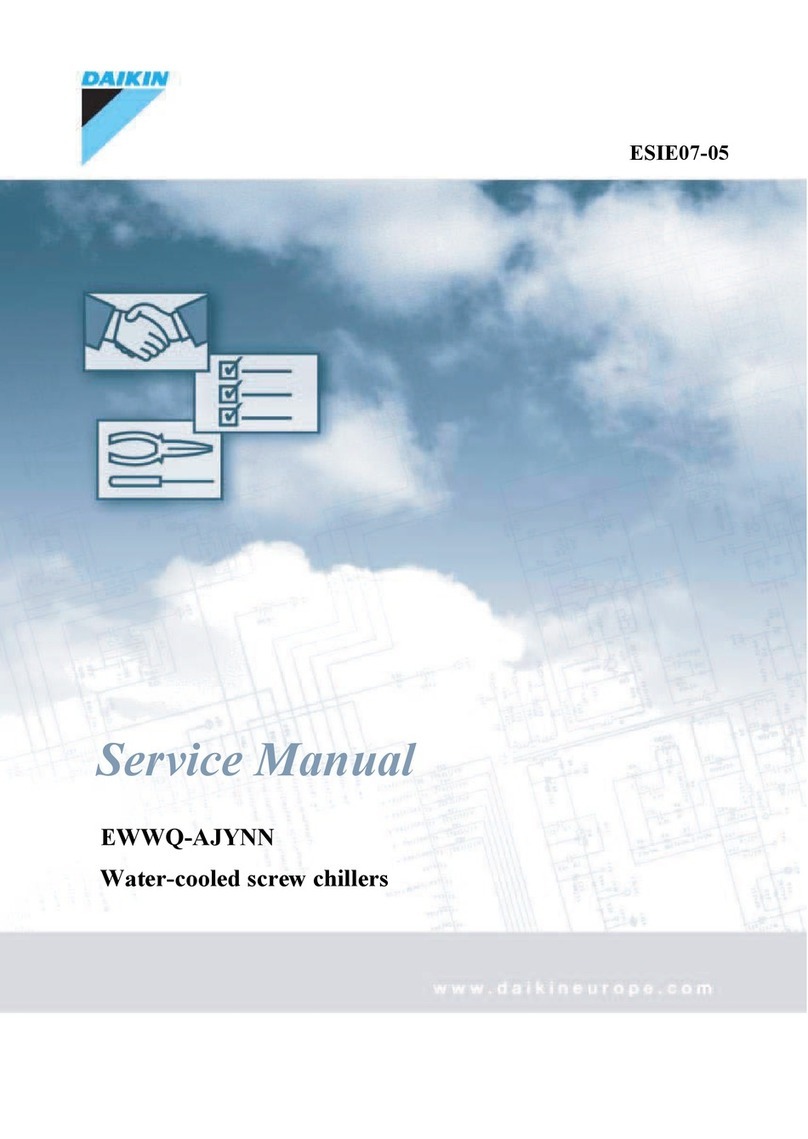
2
DANGER
Failure to follow these procedures will result in severe
personal injury or death.
DO NOT VENT refrigerant relief devices within a building.
Outlet from rupture disc or relief valve must be vented
outdoors in accordance with the latest edition of ANSI/
ASHRAE 15 (American National Standards Institute/
American Society of Heating, Refrigerating and Air-
Conditioning Engineers) (Safety Code for Mechanical
Refrigeration). The accumulation of refrigerant in an
enclosed space can displace oxygen and cause asphyxiation.
PROVIDE adequate ventilation in accordance with ANSI/
ASHRAE 15, especially for enclosed and low overhead
spaces. Inhalation of high concentrations of vapor is harmful
and may cause heart irregularities, unconsciousness, or death.
Intentional misuse can be fatal. Vapor is heavier than air and
reduces the amount of oxygen available for breathing. Product
causes eye and skin irritation. Decomposition products are
hazardous.
DO NOT USE OXYGEN to purge lines or to pressurize a
machine for any purpose. Oxygen gas reacts violently with oil,
grease, and other common substances.
DO NOT USE air to leak test. Use only refrigerant or dry
nitrogen.
NEVER EXCEED specified test pressures. VERIFY the
allowable test pressure by checking the instruction literature
and the design pressures on the equipment nameplate.
DO NOT VALVE OFF any safety device.
BE SURE that all pressure relief devices are properly installed
and functioning before operating any machine.
RISK OF INJURY OR DEATH by electrocution. High
voltage is present on motor leads even though the motor is not
running when a solid state or inside-delta mechanical starter is
used. Open the power supply disconnect before touching
motor leads or terminals.
WARNING
Failure to follow these procedures may result in personal
injury or death.
DO NOT USE TORCH to remove any component. System
contains oil and refrigerant under pressure.
To remove a component, wear protective gloves and goggles
and proceed as follows:
Shut off electrical power to unit.
Recover refrigerant to relieve all pressure from system using
both high-pressure and low pressure ports.
Traces of vapor should be displaced with nitrogen and the
work area should be well ventilated. Refrigerant in contact
with an open flame produces toxic gases.
Cut component connection tubing with tubing cutter and
remove component from unit. Use a pan to catch any oil that
may come out of the lines and as a gauge for how much oil to
add to the system.
Carefully unsweat remaining tubing stubs when necessary. Oil
can ignite when exposed to torch flame.
DO NOT USE eyebolts or eyebolt holes to rig heat exchangers
or the entire assembly.
DO NOT work on high (or medium) voltage equipment unless
you are a qualified electrician.
WARNING
DO NOT WORK ON electrical components, including control
panels, switches, starters, or oil heater until you are sure ALL
POWER IS OFF and no residual voltage can leak from
capacitors or solid-state components.
LOCK OPEN AND TAG electrical circuits during servicing.
IF WORK IS INTERRUPTED, confirm that all circuits are
deenergized before resuming work.
AVOID SPILLING liquid refrigerant on skin or getting it into
the eyes. USE SAFETY GOGGLES. Wash any spills from the
skin with soap and water. If liquid refrigerant enters the eyes,
IMMEDIATELY FLUSH EYES with water and consult a
physician.
NEVER APPLY an open flame or live steam to a refrigerant
cylinder. Dangerous over pressure can result. When it is
necessary to heat refrigerant, use only warm (110 F [43 C])
water.
DO NOT REUSE disposable (nonreturnable) cylinders or
attempt to refill them. It is DANGEROUS AND ILLEGAL.
When cylinder is emptied, evacuate remaining gas pressure,
loosen the collar, and unscrew and discard the valve stem. DO
NOT INCINERATE.
CHECK THE REFRIGERANT TYPE before adding
refrigerant to the machine. The introduction of the wrong
refrigerant can cause machine damage or malfunction.
Operation of this equipment with refrigerants other than those
cited herein should comply with ANSI/ASHRAE 15 (latest
edition). Contact Carrier for further information on use of this
machine with other refrigerants.
DO NOT ATTEMPT TO REMOVE fittings, covers, etc.,
while machine is under pressure or while machine is running.
Be sure pressure is at 0 psig (0 kPa) before breaking any
refrigerant connection.
CAREFULLY INSPECT all relief valves, rupture discs, and
other relief devices AT LEAST ONCE A YEAR. If machine
operates in a corrosive atmosphere, inspect the devices at more
frequent intervals.
DO NOT ATTEMPT TO REPAIR OR RECONDITION any
relief valve when corrosion or build-up of foreign material
(rust, dirt, scale, etc.) is found within the valve body or
mechanism. Replace the valve.
DO NOT install relief devices in series or backwards.
USE CARE when working near or in line with a compressed
spring. Sudden release of the spring can cause it and objects in
its path to act as projectiles.
SOME MODELS MAY EXCEED 85 dBA. Hearing
protection should be worn when working in the vicinity of
such chillers.
CAUTION
Failure to follow these procedures may result in personal
injury or damage to equipment.
DO NOT STEP on refrigerant lines. Broken lines can whip
about and release refrigerant, causing personal injury.
DO NOT climb over a machine. Use platform, catwalk, or
staging. Follow safe practices when using ladders.
USE MECHANICAL EQUIPMENT (crane, hoist, etc.) to lift
or move inspection covers or other heavy components. Even if
components are light, use mechanical equipment when there is
a risk of slipping or losing your balance.


